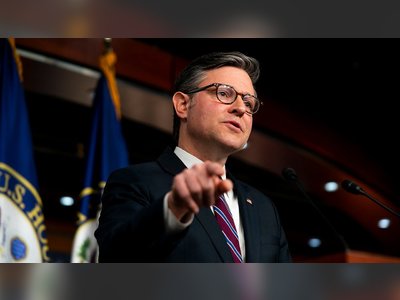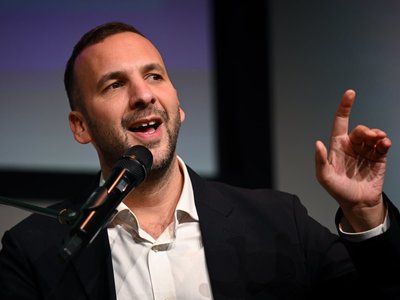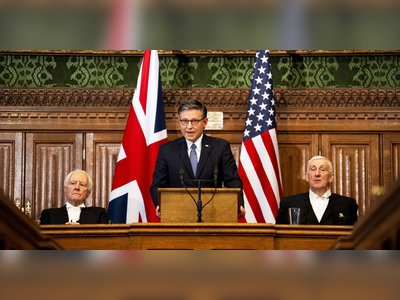Bill and Melinda Gates have spent billions trying to fix U.S. public education but say it's not having the impact they want
But in their 2020 Annual Letter titled “Why We Swing for the Fences,” Microsoft co-founder Bill Gates and his wife, former Microsoft general manager Melinda Gates, say they have not made the progress they expected -despite their financial commitments.
“If you’d asked us 20 years ago, we would have guessed that global health would be our foundation’s riskiest work, and our U.S. education work would be our surest bet. In fact, it has turned out just the opposite,” Melinda Gates writes. “In global health, there’s a lot of evidence that the world is on the right path =like the dramatic decline in childhood deaths, for example,” she says. “When it comes to U.S. education, though, we’re not yet seeing the kind of bottom-line impact we expected.”
The goal of the foundation’s U.S. initiatives is to increase economic mobility, increase the number of black, Latino and low-income students who go to college, increase college access, improve college graduation rates and support children in their home state of Washington.
The Gates have given to education initiatives since 2000, but they have not seen significant improvements in these areas. For instance, according to data from the National Center for Education Statistics, the six-year college graduation rate for American college students has hovered around just 60% for decades. For black, Latino and low-income students, college graduation rates are even lower.
Throughout the letter, Bill and Melinda provide explanations for why their education initiatives have not seen the same impressive results as their public health initiatives.
Lack of consensus
Melinda says that while the foundation aims to support the ideas of those who have spent their careers working in education, one hurdle has been that many in the field disagree about how to improve student outcomes.
“In global health, we know that if children receive the measles vaccine, they will be protected against the disease, which means they’re more likely to survive. But there’s no consensus on cause and effect in education,” she says. “Are charter schools good or bad? Should the school day be shorter or longer? Is this lesson plan for fractions better than that one? Educators haven’t been able to answer those questions with enough certainty to establish clear best practices.”
Without research that provides universal solutions, the couple says it has been difficult to fund universal outcomes.
Scale
And unlike funding a single intervention like vaccination clinics, improving educational outcomes requires supporting students along 13 years of schooling, says Melinda. “The process is so cumulative that changing the ultimate outcome requires intervention at many different stages,” she writes.
And while the Gates Foundation has funded full college scholarships to 20,000 students of color, Melinda concedes that this is just a small percentage of the tens of millions of students who have attended U.S. public schools since the scholarship’s inception 16 years ago.
Bill also writes about how the foundation’s billion-dollar bet on Common Core, a set of standards for all students in each grade, fell short of their expectations.
“We thought that if states raised the standards, the market would respond and develop new instructional materials that aligned with those standards,” he says. “That didn’t happen.”
He continues, “If there’s one lesson we’ve learned about education after 20 years, it’s that scaling solutions is difficult. Much of our early work in education seemed to hit a ceiling. Once projects expanded to reach hundreds of thousands of students, we stopped seeing the results we hoped for.”
Local solutions
To address these issues, the couple is taking a new approach.
“It became clear to us that scaling in education doesn’t mean getting the same solution out to everyone,” writes Bill. “Our work needed to be tailored to the specific needs of teachers and students in the places we were trying to reach.”
Bill says that because of this lesson, the foundation has shifted to funding solutions proposed by local public school networks as part of an initiative they call Networks for School Improvement.
So far, the organization has spent $240 million on the program. “Rather than focus on one-size-fits-all solutions, our foundation wants to create opportunities for schools to learn from each other,” writes Bill.
The role of philanthropy
It’s not the first time the couple has been let down by the results of their education initiatives.
In their 2018 letter, Bill admitted that they “haven’t seen the large impact we had hoped for.”
Despite these continued challenges, Melinda says they are committed to the cause.
“The fact that progress has been harder to achieve than we hoped is no reason to give up, though. Just the opposite. We believe the risk of not doing everything we can to help students reach their full potential is much, much greater,” writes Melinda this year. “Our role as philanthropists is not only to take risks that support innovation but to work with our partners to overcome the challenges of scale in delivering it.”













